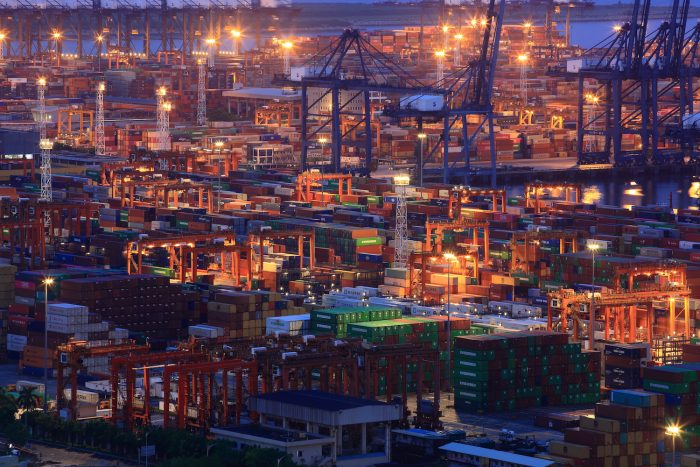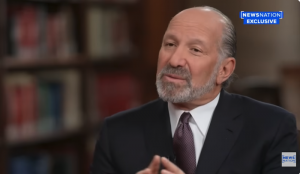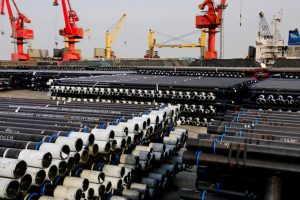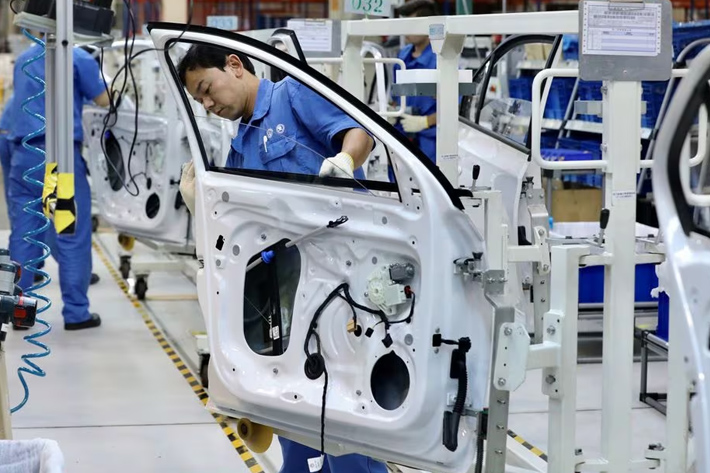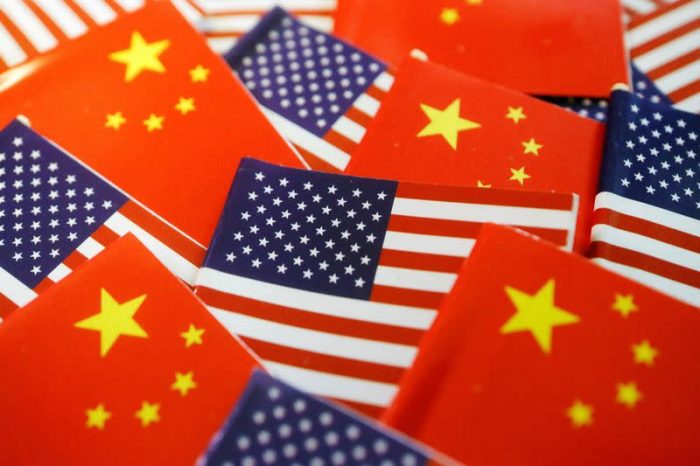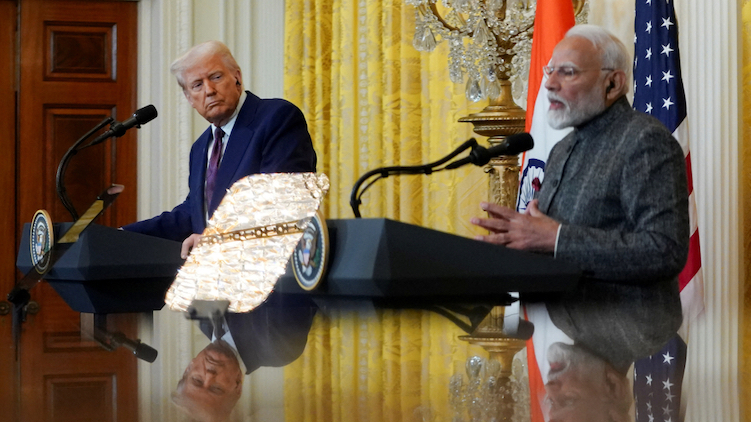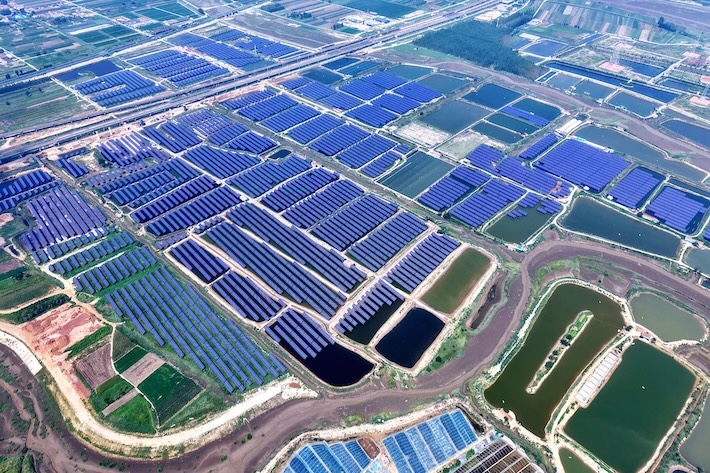The US-China trade agreement has spurred traffic jams at Chinese ports amid a resurgence in bookings for containers to be shipped to the United States.
The 90-day tariff truce agreed in Switzerland that sent a chill through bilateral trade and global markets has led to a race to get Chinese products across the Pacific before tariffs get reset.
The cargo surge at major trade gateways like Shenzhen’s Yantian Port, which handles more than a quarter of China’s exports to the United States, has ship owners scrambling to coordinate berths and adjust vessel schedules.
ALSO SEE: Trump Unveils Huge Chip Deals in Gulf After Rejig of Export Rules
“The demand is so high that we can only serve customers who have made long-term contracts with us,” a spokesperson for German container ship operator Hapag-Lloyd told Reuters. “We have hardly enough space for spontaneous bookings.”
Container-tracking software provider Vizion said average bookings for the seven days ended on Wednesday soared 277% to 21,530 20-foot equivalent units from the 5,709 TEU average for the week ended May 5.
Owners of factories that make toys to holiday decor said they are booking previously frozen cargo headed to US stores, including Walmart.
Lalo, for example, which sells its baby furniture online and through retailers like Target and Amazon.com, is among the companies that gave factories the green light to move their finished orders.
“We had hundreds of thousands of units waiting to ship,” Lalo co-founder Michael Wieder said. “These products can now get on the water.”
“Everybody is very busy from my company, at my friend’s companies,” said Richard Lee, CEO of NCL Logistics, in China’s southern metropolis of Shenzhen. “They are preparing a lot of cargo, a lot of products, to be shipped immediately from China to the US.”
‘Cancelling cancellations’
The shipping surge will translate into a rush of arrivals at US West Coast ports in the coming weeks.
Still, industry experts, including the executive director of the Port of Los Angeles – the busiest US seaport and No-1 for ocean shipments from China, do not foresee a Covid-level tsunami of cargo. Rather, they project a large, but manageable wave.
On Thursday, the off-contract spot rate from Shanghai to Los Angeles shot up 16% from the prior week to $3,136 per 40-foot container, according to data from maritime consultancy Drewry. That is less than half than in April 2024, but could jump sharply on June 1 to about $6,000 per container if ship owners push through rate increases.
In the early days of the pandemic, as now, cargo demand spikes overwhelmed factories and container ships, kinking supply chains. Shipping and retail experts said 90 days is not enough time for most factories to fill new orders.
Fewer slots are available on cargo ships because vessel owners had been culling China-to-US voyages and schedules. Now, ocean carriers are “cancelling cancellations” of sailings, Drewry said.
Demand, however, is markedly different this time.
Trump’s second-term tariffs have weakened US retail sales, home-building and manufacturing – key drivers of container shipments.
Moreover, many US companies are sitting on inventory accumulated before Trump imposed tariffs on China and other countries. And nobody knows what import duties will be when the 90-day deadline expires in August.
The Trump administration confirmed to Reuters that the US rate would reset to 54%, assuming no agreement is reached by the deadline.
30% tariff
Many retailers are prioritizing which products to order and ship, said Jessica Dankert, vice president of supply chain for the Retail Industry Leaders Association trade group, whose members include Home Depot, Gap and Dollar General.
“It’s still 30% at the end of the day,” said Jamie Salter, CEO of Authentic Brands Group, referring to tariffs on China. Authentic Brands owns and licences clothing brands including Reebok, Champion, and Forever 21.
Some large suppliers to Detroit’s Big Three automakers said that on customers’ requests, they are flying in parts from China and stockpiling them.
Others declined to add to inventories, saying they lacked the space and funds to do so.
A Halloween goods exporter from the city of Yiwu in China, who gave her English name, Cecilia, said tariff increases have cut total orders in half this year and warned that prospective buyers are running out of time.
“If you order now, you will have an anxious wait to see if it will be too late,” she said.
Jimmy Zollo, CEO of Joe and Bella, sells Chinese-made clothing for adults who have trouble dressing themselves due to arthritis, dementia or being in a wheelchair. He placed a new order with his supplier even though the 90-day window could close before he can take delivery.
“We’re hopeful that a new trade agreement is implemented, and the lowered tariffs do not expire,” Zollo said.
- Reuters with additional editing by Jim Pollard
ALSO SEE:
Mass Layoffs Avoided in China, But Export Sector Badly Shaken
Trump Tells Apple CEO ‘I Don’t Want You Building in India’
Rogue Communication Devices Found in Chinese Solar Inverters
China’s CATL Looking to Raise $4 Billion In Hong Kong Listing
Satellite Images Show Huawei’s Expanding Chip Facilities – FT
US Lawmakers Push Location-Tracking For High Powered AI Chips
Asian Markets Rise After US, China Agree to Cut Majority of Tariffs




